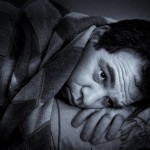
Sleep bruxism is defined as ‘a repetitive jaw-muscle activity characterised by clenching or grinding of the teeth and/or by bracing or thrusting of the mandible. Bruxism has two distinct circadian manifestations: it can occur during sleep (indicated as sleep bruxism) or during wakefulness (indicated as awake bruxism).’ [Lobbezoo et al]. Treatment approaches involve the use oral appliances (OA), centrally acting drugs, counselling/behavioural strategies, psychological treatment and physiotherapy with oral appliances being one of the most common approaches.
The aim of the review was to assesses the benefits of any currently available oral appliance in the management of sleep bruxism,
Methods
Searches were conducted in the Cochrane Library and PubMed/Medline databases for English language studies published between January 2007 and January 2017. Studies where the efficacy of OA for the management of SB in adults diagnosed using polysomnography (PSG) with or without audio–video (AV) recordings, polygraphy, nocturnal electromyography (EMG) recorded by portable devices or with clinical/anamnestic criteria (ICSD-3) were considered. The primary outcomes were change in the frequency of SB episodes, bursts and related masticatory muscle activities measured preferably with sleep-time EMG recordings.
Two reviewers independently selected studies and study quality assessed. The Cochrane risk of bias tool was used for RCTs, Critical Appraisal Skills Programme (CASP) Cohort Study Checklist for before and after studies and the Cochrane Handbook‘s suggestions for assessing risk of bias in crossover studies. Owing to study heterogeneity a narrative synthesis was undertaken.
Results
- 16 studies (7RCTs, 7 before and after studies, 2 cross-over trials) were included.
- The overall risk of bias in the 7 RCTs was considered to be unclear.
- The before and after studies had several methodological limitations in particular small sample sizes.
- The cross-over studies were considered to be at high-risk of bias.
- 9 studies used polysomnography/polygraphy/electromyography for SB diagnosis The others were based on history taking and clinical examination.
- Most studies featured had samples and were short term.
- Of the studies using objective SB evaluations, eight showed positive results for almost every type of OA in reducing SB activity, with a higher decrease for devices that are designed to provide a certain extent of mandibular advancement.
- Among the studies using a subjective SB evaluation, one demonstrated a significant reduction in SB activity, and additional two showed a myorelaxant effect of OA in SB patients.
Conclusions
The authors concluded: –
Although many positive studies support the efficiency of OA treatment for SB, accepted evidence is insufficient to support its role in the long-term reduction of SB activity. Further studies with larger samples and sufficient treatment periods are needed to obtain more acknowledgements for clinical application.
Comments
Previous reviews of the treatments for sleep bruxism (Dental Elf – 30th Jun 2015) have all concluded that there is no high-quality evidence on which to base treatment recommendations. Previous reviews have looked at a range of treatment for SB and while this review has just focused on oral appliances the findings are similar. That is, there is no high-quality evidence to support the use of oral appliances for sleep bruxism. As some studies using mandibular advancement appliance (MAA) demonstrated some adverse effects it is important that high quality, well conducted and reported trials are conducted with larger sample sizes and over a longer term are carried out.
Links
Primary paper
Jokubauskas L, Baltrušaitytė A, Pileičikienė G. Oral appliances for managing sleep bruxism in adults: a systematic review from 2007 to 2017. J Oral Rehabil.2017 Aug 31. doi: 10.1111/joor.12558. [Epub ahead of print] Review. PubMed PMID: 28859236.
Other references
Lobbezoo F, Ahlberg J, Glaros A, Kato T, Koyano K, Lavigne GJ et al. Bruxism Defined and Graded: an International Consensus. J Oral Rehabil. 2013;40:2–4.
Dental Elf – 30th Jun 2015
